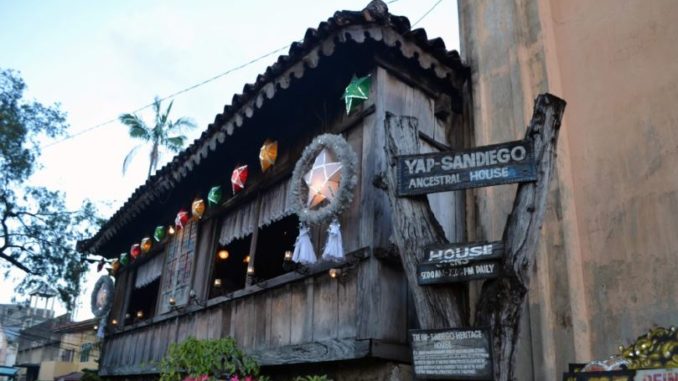
The Yap-Sandiego Ancestral House, located in Cebu City, Philippines, is one of the oldest and best-preserved historical houses in the country. Built in the late 17th century, it showcases traditional Filipino-Spanish architecture. The house was originally constructed by Chinese merchant Don Juan Yap and his wife, Doña Maria Florido. Over the centuries, it has remained in the Yap-Sandiego family, preserving its heritage and legacy.
The ancestral house is a testament to Cebu’s rich cultural history, blending Spanish and Chinese influences. It features a typical “bahay na bato” structure, with a coral stone foundation and wooden upper floors made from Philippine hardwood. The steep, sloping roof is made of clay tiles, and large, capiz shell windows allow natural light to illuminate the interiors.
Stepping inside the Yap-Sandiego Ancestral House is like traveling back in time. The interior is filled with antique furniture, religious icons, century-old decorations, and various artifacts that offer a glimpse into the domestic life of a wealthy family during the Spanish colonial period. The living room, dining area, and bedrooms are all adorned with intricate wood carvings and period pieces, including a four-poster bed, a traditional “baul” (wooden chest), and an old-fashioned “aparador” (wardrobe).
One of the unique aspects of the house is its collection of religious artifacts. The Yap-Sandiego family were devout Catholics, and their home reflects their faith with numerous statues of saints, crucifixes, and altars scattered throughout the house. These artifacts are not only of religious significance but also add to the historical value of the house.
The exterior of the house features a charming garden and a small well, which were essential parts of daily life in the past. The garden is a serene space with lush greenery, providing a contrast to the bustling city outside.
Today, the Yap-Sandiego Ancestral House serves as a museum, managed by the descendants of the Yap-Sandiego family. Visitors can explore the house and its grounds, gaining insights into the lifestyle, traditions, and history of Cebuano families during the Spanish colonial era. The house stands as a cultural landmark, preserving Cebu’s architectural heritage and offering a tangible connection to the past. Its well-maintained state and the dedication of its caretakers make it a must-visit destination for history enthusiasts and tourists alike.
Wikimedia: Yap-Sandiego Ancestral House
Related Tours:
